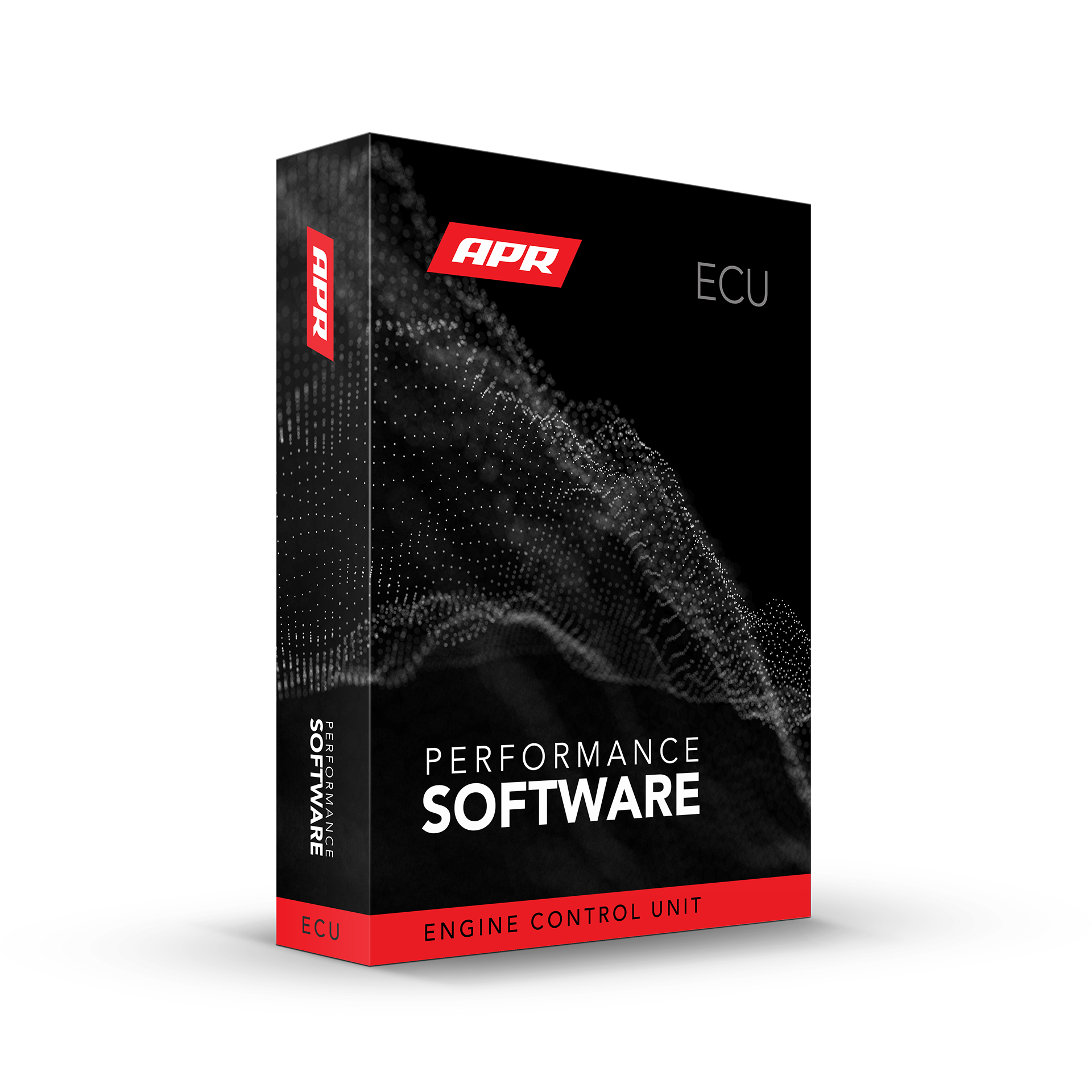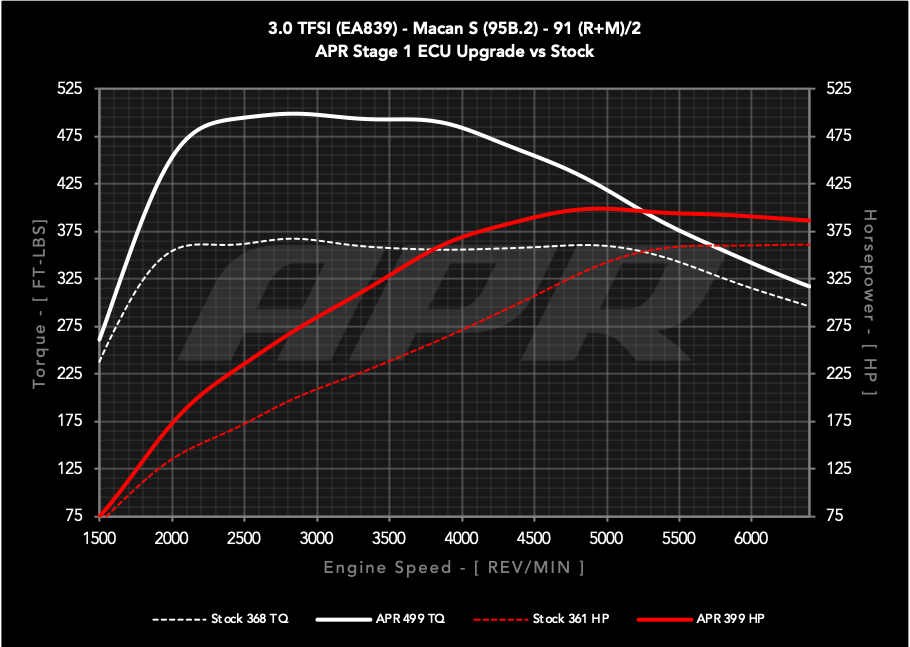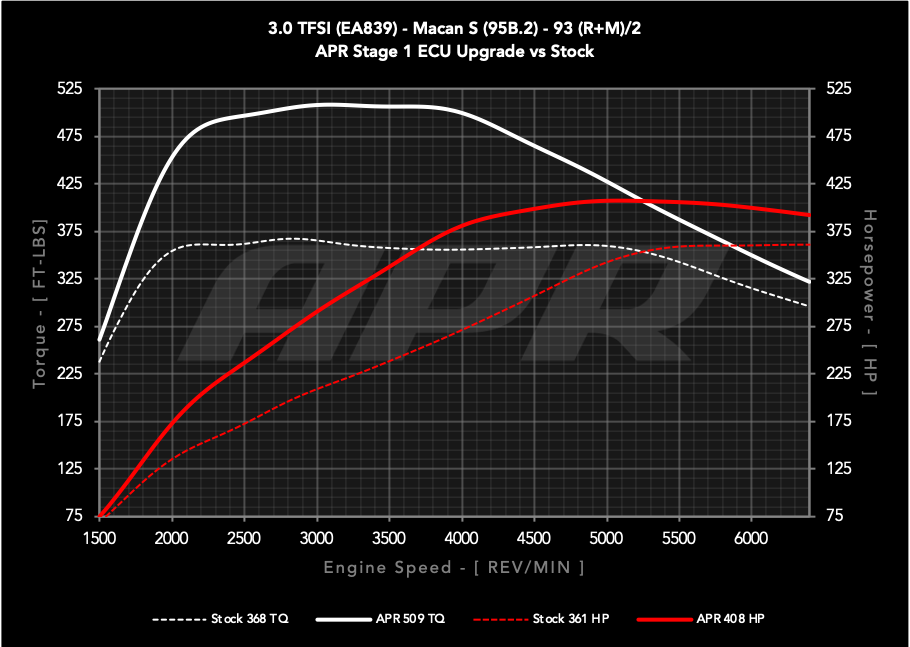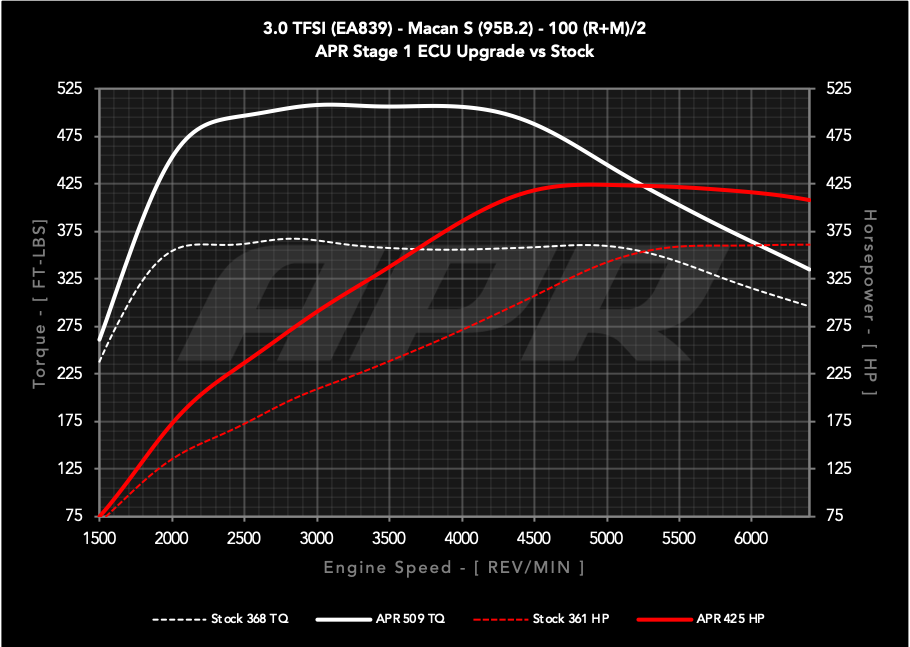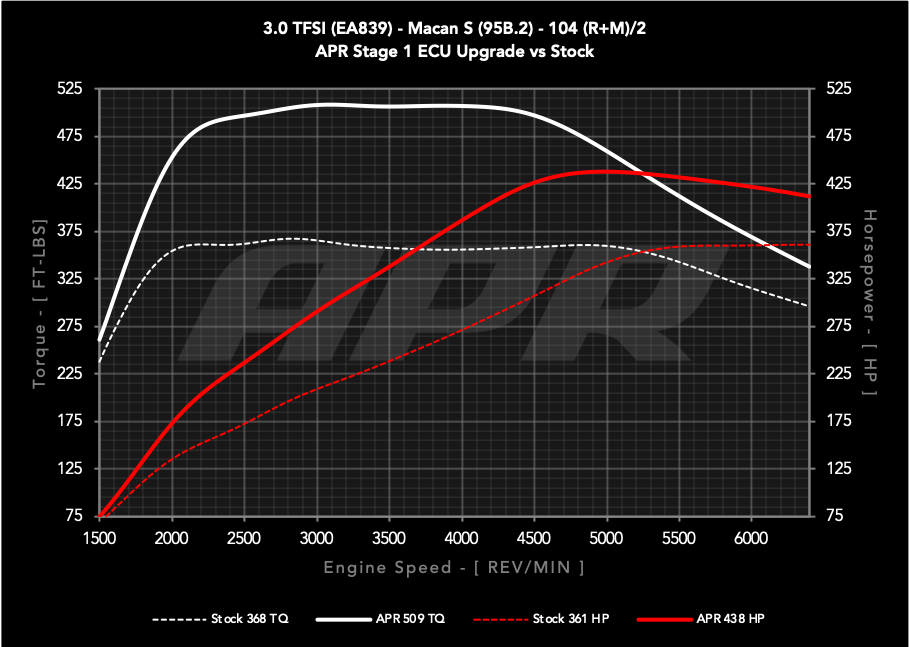APR - Performance ECU Software - 3.0T EA839 V6 (95B.2) (Macan S)
APR - Performance ECU Software - 3.0T EA839 V6 (95B.2) (Macan S)
Couldn't load pickup availability
Share
SKU:ECU-30T-EA839-95B2
View full details
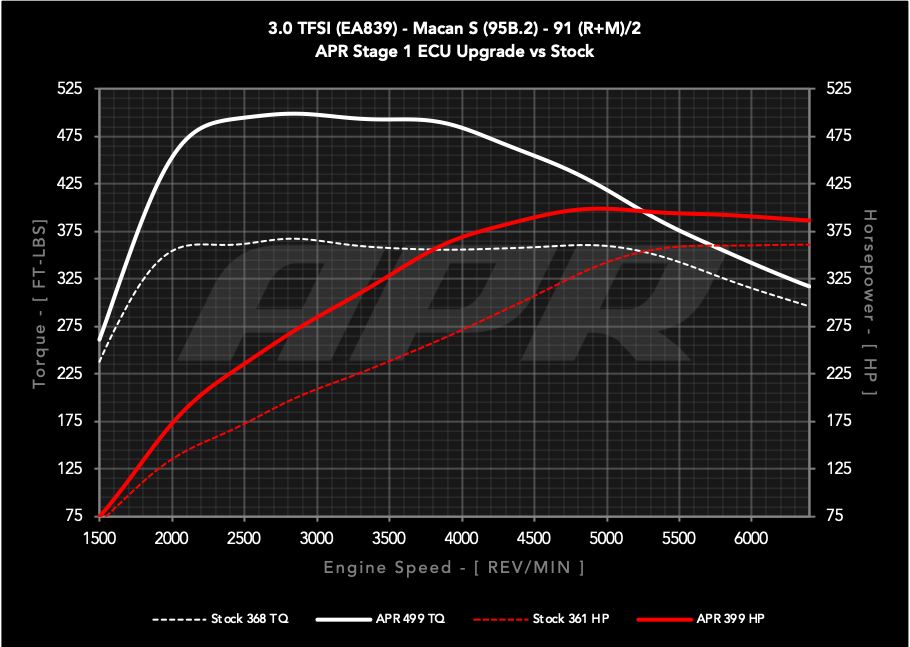
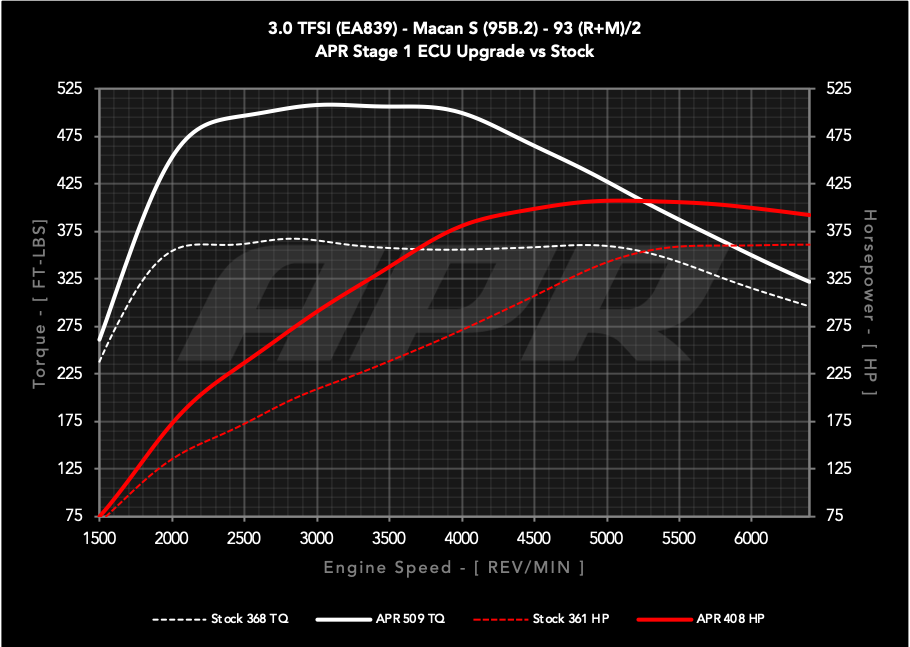
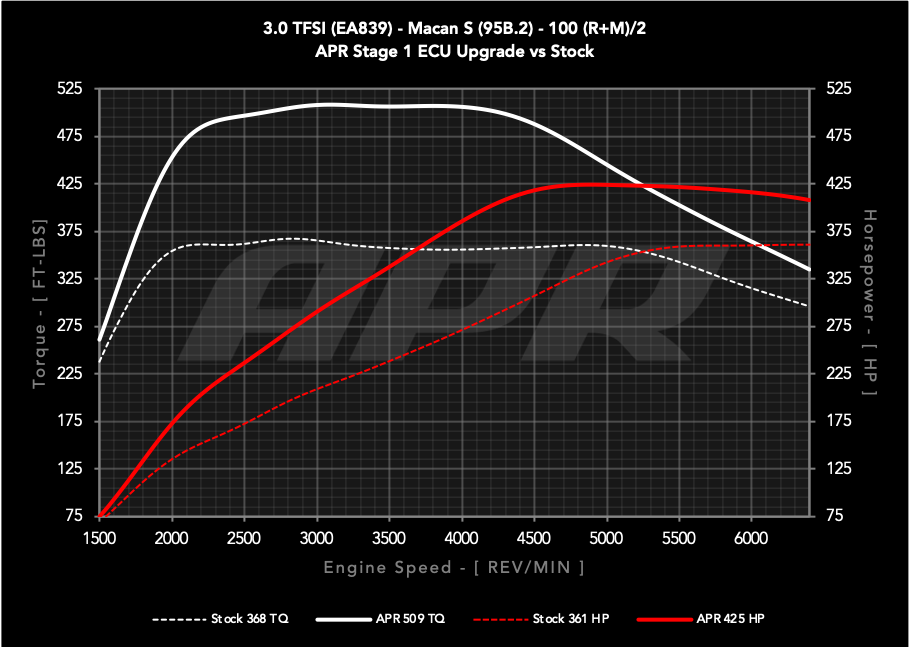
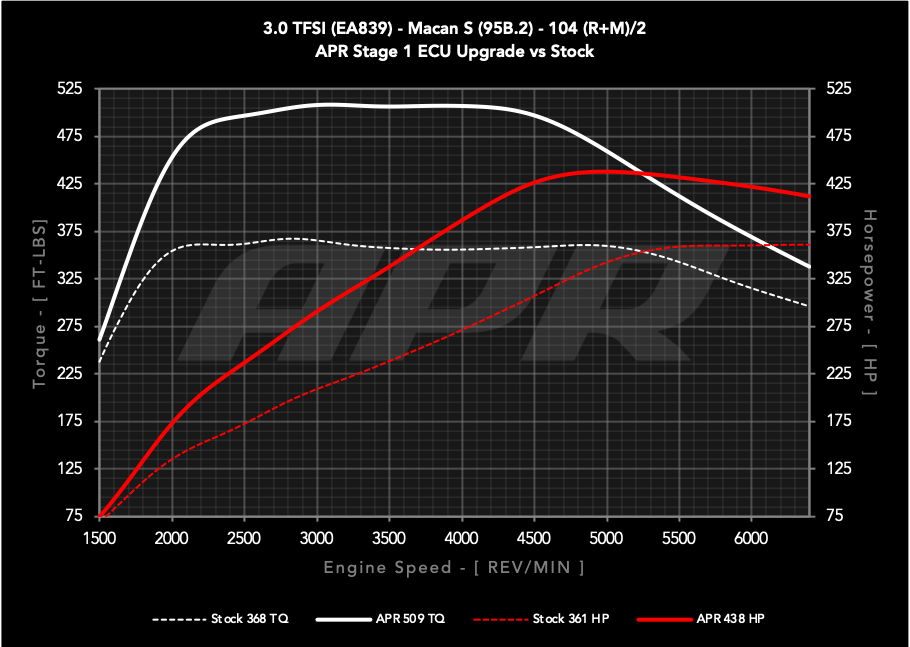
OVERVIEW
Features:
- Delivers up to 399-438 HP with 499-509 FT-LBS depending on octane
- Max gains of +98-120 AWHP and +136-152 AWFT-LBS depending on octane
- Supports 91 AKI, 93 AKI, 100 AKI, and 104 AKI fuel grades
- Optional factory term limit matching limited powertrain warranty with APR Plus
- Standing RPM soft limiter increased
- Left-foot braking / brake boosting added
- Properly rescaled performance gauges within the ECU CAN data
- Optimized launch control strategy for faster response and boost building
- Optimized driveline protection during launch
- Optimized thermal management and additional protection
- Optimized high-gear LSPI protection and turbocharger protection added
- Speed limiter removed
- Exhaust crackle retains temperature safeties
- Auto start-stop defaults to the off position
- No hardware required (Software only)
- Supports standard bolt on modifications
- Eliminated the need for a TCU upgrade to achieve full torque
- Flash counter does not increase with each flash
- Free lifetime updates
- Direct OBDII port flash (No ECU removal)
- 30 day money back guarantee
APR ECU Upgrade Stages
Our new suite of MG1 ECU software comes after months of extensive research and development that is typically absent from the aftermarket. Our upgrade makes the engine more powerful and more exciting. We’ve extensively calibrated the system to work flawlessly on the track, while retaining safety routines to protect your engine in the most demanding scenarios. This was all made possible by our engineering team's pursuit of perfection. Development vehicles were outfitted with additional sensors, including turbo shaft speed sensors, thermocouples, transducers, and more, along with our high speed direct RAM logging equipment, to feed valuable data to the team for analysis. After thousands of hours of testing and tuning we created new calibrations that are fine tuned for several octanes and contain hundreds of map changes, with a vast array of safety features built in.
The result of this work is nothing short of astounding. Not only have we increase power, we’ve added many safety routines to ensure the engine and components are protected under demanding scenarios. Additionally we’ve added features to enhance the driving experience.
We’ve recalibrated the exhaust flaps to reduce backpressure and create consistent turbo spool characteristics. Sound characteristics are improved too, especially during free-rev, which sees its limiter raise in park and neutral. Through proper torque management and ECU code changes, we’ve removed the requirement of a transmission tune to achieve full torque while keeping torque flat to protect the transmission. We’ve optimized launch control for a better take-off and enabled boost building on the line. Additionally we’ve defaulted the start-stop feature to the off position, removed the speed limiter, added left-foot braking or brake-boosting, and configured the ECU to send the correct calibration to the dash for the performance gauges.
To protect the engine and components we’ve spent a considerable amount of time tuning safety routines, some of which were not active from the factory. The ECU will protect the engine should the exhaust flaps fail as back pressure becomes too high. The exhaust crackle feature will turn off should components get too hot. The engine has advanced LSPI protection to prevent the engine from damage when being lugged in the tallest gears. Excessive intake air temperature, which is common on a dynamometer, will cause power to reduce to protect the engine. Furthermore more we’ve added and calibrated protection routines for turbocharger pressure ratios, shaft speed, exhaust pressure, intake air temperature, coolant temperature, oil temperature, lambda, fueling system limitations, and more. All of this and more gives us confidence to offer an optional limited powertrain warranty through APR Plus!
Our ECU Upgrades are available in multiple configurations. Installation of additional performance hardware, such as an intercooler or intake systems, may provide further performance improvements.
APR Calibration Report
| Stage | HP | TQ | Max Gain | Max Gain |
|---|---|---|---|---|
| Stock As Reported by Porsche | 348 HP | 354 FT-LBS | ||
| Stock As Measured by APR | 361 HP | 368 FT-LBS | ||
| APR Plus | ||||
| 91 AKI / 95 RON | 399 HP | 499 FT-LBS | +98 HP | +136 FT-LBS |
| Stage 1 | ||||
| 91 AKI / 95 RON | 399 HP | 499 FT-LBS | +98 HP | +136 FT-LBS |
| 93 AKI / 98 RON | 408 HP | 509 FT-LBS | +110 HP | +150 FT-LBS |
| 100 AKI / 104 RON | 425 HP | 509 FT-LBS | +117 HP | +151 FT-LBS |
| 104 AKI / 108 RON | 438 HP | 509 FT-LBS | +120 HP | +152 FT-LBS |
APR Software Pricing Guide
Our performance software upgrade is available in multiple stages with optional features.
| APR Plus (USA/Canada) | |
|---|---|
| APR Stage 1 ECU Upgrade | $1,799.95 |
| APR Stage 1 | |
| APR Stage 1 ECU Upgrade | $899.95 |
| APR Stage 1 ECU Upgrade from APR Plus | FREE |

